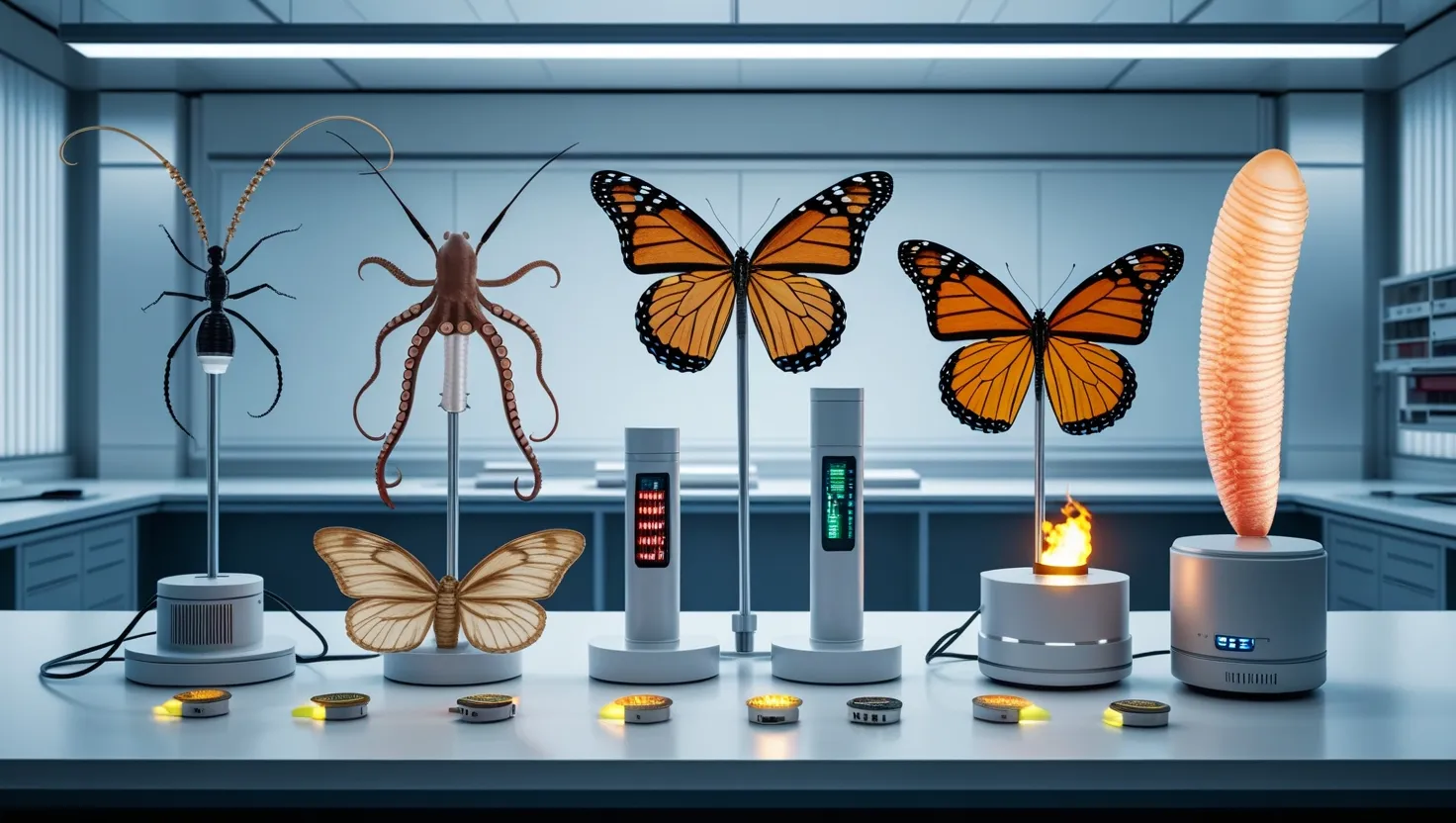In the vast and intricate world of technology, a fascinating field has emerged that draws inspiration from the most unexpected sources: nature. Biomimetic sensors, devices that mimic the sensory capabilities of living organisms, are revolutionizing how we detect and interact with our environment. These innovative tools are not just replicas of natural systems; they are enhancements that often surpass the sensitivity and efficiency of their biological counterparts.
Imagine a world where sensors can detect thousands of compounds that the human nose cannot, thanks to the smell receptors of insects. This is exactly what scientists at ScentianBio have achieved by studying how insects detect smells. These highly sensitive biosensors can identify and measure a vast array of chemicals, making them invaluable for monitoring food quality and enabling earlier disease detection. This technology is a prime example of how nature’s solutions can be adapted to solve complex human problems.
Another remarkable example comes from the octopus, an animal known for its ability to change color and texture. Engineers at Cornell University have developed stretchable materials inspired by octopus skin, which can morph in shape, size, color, and texture as needed. This innovation has far-reaching applications, from packaging and shipping to military camouflage. The ability to create materials that can transform like living tissue opens up new possibilities in various industries.
Even the humble cat has contributed to this field. Researchers at Harvard University have studied the unique structure of a cat’s tongue, which features tiny spikes called papillae that act as scoops to remove dust and dirt. This design has been replicated in a 3D-printed cleaning brush that is more effective than traditional brushes for cleaning pets, human hair, and even carpets. It’s a simple yet powerful example of how nature’s designs can be translated into practical solutions.
Butterflies, too, have inspired significant advancements. The rose butterfly’s black wings, which absorb energy from the sun efficiently, have led to the development of thin film solar cells in Germany. These solar cells, made from hydrogenated amorphous silicon, can absorb light at any angle and are more efficient than traditional thick sheet solar cells. This innovation highlights how nature’s adaptations can lead to more efficient energy production.
In the realm of vision, biomimetic sensors are mimicking the human eye with remarkable accuracy. Prophesee’s Metavision technology, inspired by the retina, uses pixels that work independently and react only to changes in the scene. This makes it highly sensitive to motion, outperforming the human eye in detecting issues early on. This technology is particularly useful in industries like food processing and machine monitoring.
Fireflies have also played a role in this technological evolution. Researchers at Penn State University and the Korea Advanced Institute of Science and Technology (KAIST) have studied the microstructure of the firefly’s abdomen to enhance the efficiency of LEDs. By applying the principles of firefly bioluminescence to LED design, they have increased the brightness and efficiency of these lights by reducing internal reflection and allowing more light to escape.
The detection of explosives and toxic chemicals is another critical area where biomimetic sensors are making a significant impact. Inspired by the antennae of the Bombyx moth, researchers have developed a sensor that can detect TNT concentrations as low as 0.8 parts per trillion, far surpassing the accuracy of trained dogs. This sensor is a testament to the precision and sensitivity that can be achieved by mimicking nature.
Forest fires, a growing concern globally, are being tackled with sensors inspired by pyrophilic insects like the fire bug. These insects can detect forest fires from great distances, and German researchers have replicated this ability in an ultra-efficient forest fire sensor. This sensor is 80 times more powerful than others on the market, enabling earlier detection and better protection of forests.
Even the structure of insect wings is being used to create innovative sensors. For instance, the wings of certain insects change color based on the refractive index of the medium they are in. Researchers at the EPFL in Switzerland have replicated this structure using polymers, creating a sensor that can measure the sucrose content of solutions, such as in wine production. This low-tech alternative to traditional refractometers is a simple yet effective example of biomimicry in action.
Biomimetic sensors are also being developed to detect seismic vibrations, inspired by the structure of the fly’s eye. NASA is working on such a sensor, which could revolutionize how we monitor and respond to seismic activities. This technology, though still in development, promises to provide new alternatives for detecting and analyzing vibrations.
The applications of biomimetic sensors extend far beyond these examples. In medical diagnostics, these sensors can detect disease markers with unprecedented sensitivity. For instance, sensors inspired by the human nose can identify specific biomarkers in breath or blood samples, enabling early diagnosis of diseases like cancer or diabetes.
In environmental monitoring, biomimetic sensors are crucial for detecting pollutants and monitoring water and air quality. Sensors inspired by fish and other aquatic organisms can detect changes in water chemistry, alerting us to potential environmental hazards. Similarly, sensors mimicking the olfactory systems of animals can detect airborne pollutants, helping us monitor and improve air quality.
Security applications also benefit significantly from biomimetic sensors. The ability to detect explosives and toxic chemicals with high accuracy, as mentioned earlier, is a critical tool in counter-terrorism and public safety. Additionally, sensors inspired by the infrared vision of snakes can detect heat signatures, aiding in surveillance and security operations.
The development of biomimetic sensors is not just about mimicking nature; it’s about understanding and enhancing the sensory capabilities that living organisms have evolved over millions of years. By studying how animals and plants interact with their environment, scientists can create technologies that are more efficient, sensitive, and sustainable.
This field is constantly evolving, with new research and innovations emerging regularly. The integration of artificial intelligence and machine learning with biomimetic sensors is opening up new avenues for data analysis and interpretation. For instance, AI can help process the complex data generated by these sensors, enabling real-time monitoring and response systems.
In conclusion, biomimetic sensors represent a groundbreaking intersection of nature and technology. By drawing inspiration from the intricate sensory systems of living organisms, we are creating detection technologies that are revolutionizing various fields, from medical diagnostics and environmental monitoring to security and energy production. As we continue to explore and understand the natural world, we are likely to uncover even more innovative solutions that can transform our world for the better.






